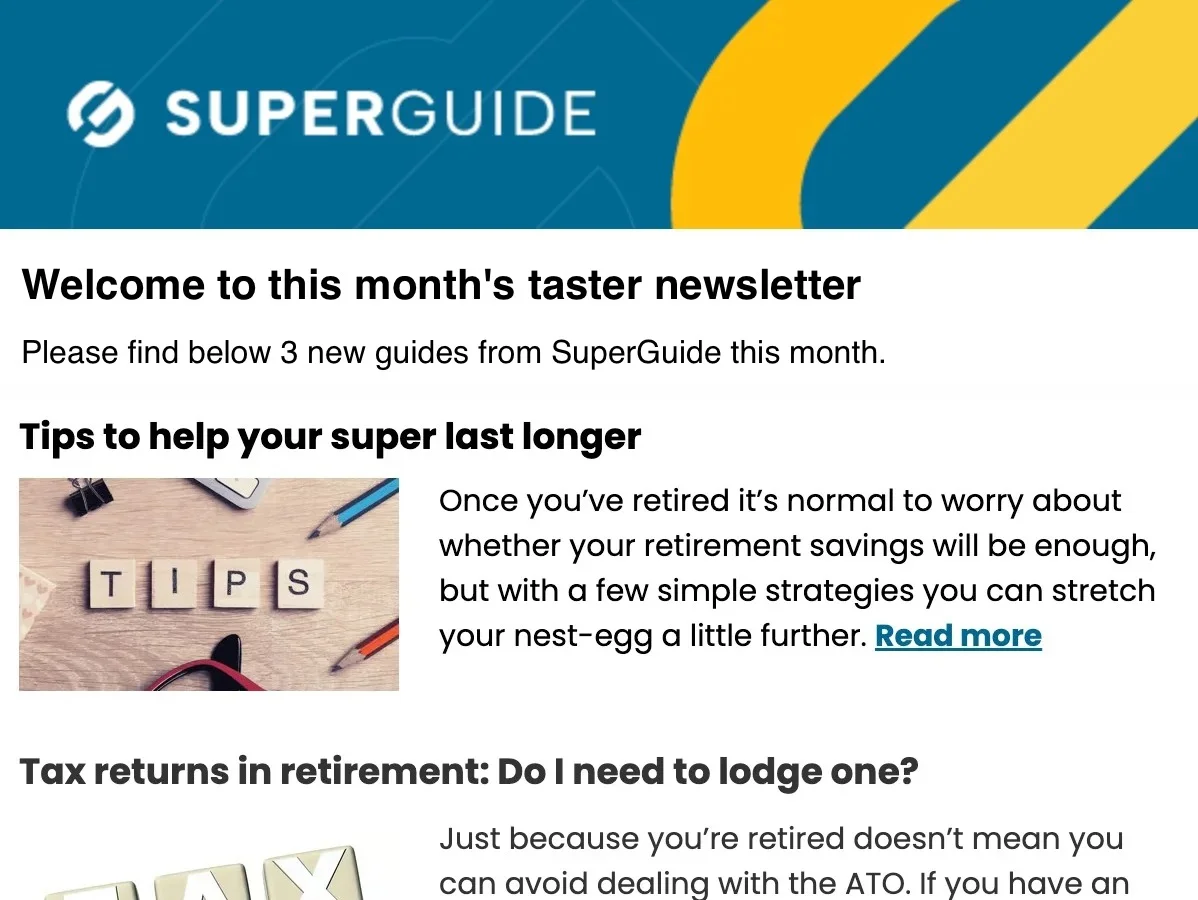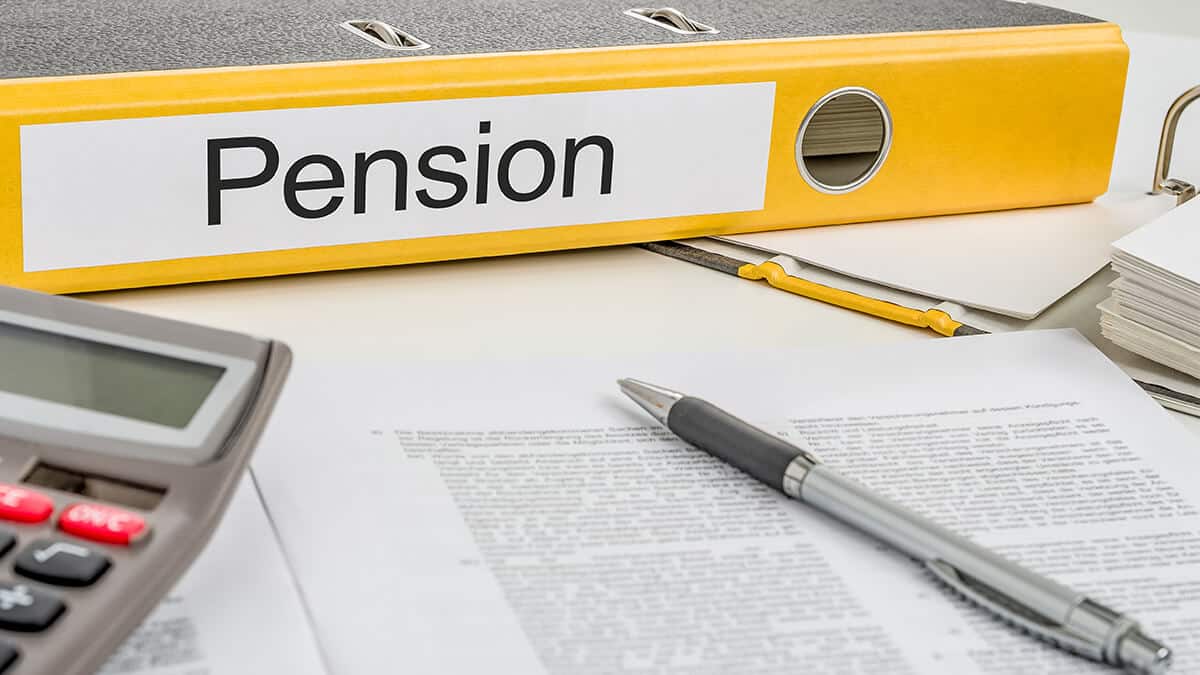In this guide
The Age Pension is one of the ‘three pillars of retirement income’ in Australia – along with superannuation and private savings. It plays a critical role in retirement income for many, including retirees who are substantially self-funded.
Around two thirds of Australians aged over 67 currently receive at least some Age Pension, with 41% on the full pension and 25% on a part pension. So don’t assume you won’t be eligible – you could be pleasantly surprised.
Your eligibility for the Australian Age Pension depends on your age, residency and whether you pass means tests based on your assets and income.
Age rules
The first requirement that you must satisfy to be eligible for the Age Pension is reaching the minimum age, which increased to 67 years from 1 July 2023.
What is your Age Pension (and Preservation) age?
The tool below can help you calculate your Age Pension age. All you need to do is enter your date of birth.
This tool also calculates your preservation age (which is the age you can access your super if you meet a condition of release, such as retiring or turning 65 years of age). Like the Age Pension eligibility age, your preservation age depends on your date of birth.

Free eBook
Retirement planning for beginners
Our easy-to-follow guide walks you through the fundamentals, giving you the confidence to start your own retirement plans.
"*" indicates required fields
Note: When the calculator first appears, by default it shows the result for 1st January 1960.
Residency rules
You must also be an Australian resident to qualify for the Age Pension, along with meeting at least one of the following criteria:
- You have been an Australian resident for at least ten years (and at least five of those years have been consecutive).
- You have been a female Australian resident for the past two years and you are the widow of an Australian resident.
- You were receiving an Australian widow’s pension or allowance (or a partner allowance) immediately before you reached your pension eligibility age.
There are some limited exceptions to the above criteria. For example, Australia has an arrangement with New Zealand that their citizens who are Australian residents can receive an Australian Age Pension, provided they also meet the age eligibility requirement and they pass the means tests.
In addition, refugees, former refugees and their family members have a qualifying residence exemption. This allows them to qualify for the Australian Age Pension if they meet all other eligibility requirements.
Means tests
Means tests for the Age Pension include both an assets test and an income test. You need to pass both tests, and the results affect how much Age Pension you’re entitled to receive.
Assets test
The market value of any assets that you or your partner own will be assessed by Centrelink to determine your potential eligibility for the Age Pension.
Your residential home is not included in the assets test, but nearly all your other assets will be, including your superannuation.
There are limits on the value of the assets you (and your partner combined) can own to be eligible for either a full or part pension. The limits depend on whether you own your own home, as well as your living arrangements (including if you have a partner and whether they are age-eligible for the pension). These limits are outlined in the table below.
Assets limits for a full Age Pension
| Situation | Latest limit | Previous limit | Increase | |
|---|---|---|---|---|
| Single | Homeowner | $321,500 | $314,000 | $7,500 |
| Single | Non-homeowner | $579,500 | $566,000 | $13,500 |
| Couple (combined) | Homeowner | $481,500 | $470,000 | $11,500 |
| Couple (combined) | Non-homeowner | $739,500 | $722,000 | $17,500 |
- Latest limits apply 1 July 2025 to 30 June 2026
- Previous limits apply 1 July 2024 to 30 June 2025
Source: Services Australia
Manage your retirement savings with confidence – for free

Get practical guidance from independent experts to help you make the most of your finances in retirement with a free SuperGuide account.
Find out moreOnce you exceed these limits, your pension reduces by $3 per fortnight for every $1,000 of excess assets. For example, if your assets exceed your limit by $30,000, your fortnightly pension payment would decrease by $90 per fortnight (i.e. 30 x $3). The amount of Age Pension you are eligible for cuts off completely when the value of your assets exceeds the figures below.
Assets limits for a part Age Pension (residents)
| Situation | Latest limit | Previous limit | Increase | |
|---|---|---|---|---|
| Single | Homeowner | $714,500 | $704,500 | $10,000 |
| Single | Non-homeowner | $972,500 | $962,500 | $10,000 |
| Couple (combined) | Homeowner | $1,074,000 | $1,059,000 | $15,000 |
| Couple (combined) | Non-homeowner | $1,332,000 | $1,317,000 | $15,000 |
| Couple (illness-separated, combined) | Homeowner | $1,267,500 | $1,247,500 | $20,000 |
| Couple (illness-separated, combined) | Non-homeowner | $1,525,500 | $1,505,500 | $20,000 |
- Latest limits apply 20 September 2025 to 19 March 2026
- Previous limits apply 1 July 2025 to 19 September 2025
Source: Services Australia
Income test
Centrelink will also assess your income from all sources (including income from your superannuation and other investments) to determine your eligibility for the Age Pension. It’s important to understand that Centrelink use deeming rates to calculate a standardised return you’re likely to get from different types of investments you may have, regardless of whether you actually earn that return or not.
Income limits for a full Age Pension
| Situation | Latest fortnightly limit | Latest annual limit* | Previous fortnightly limit | Previous annual limit* | Fortnightly increase | Annual increase* |
|---|---|---|---|---|---|---|
| Single | $218 | $5,668 | $212 | $5,512 | $6.00 | $156 |
| Couple (combined) | $380 | $9,880 | $372 | $9,672 | $8.00 | $208 |
| Couple (illness-separated, combined) | $380 | $9,880 | $372 | $9,672 | $8.00 | $208 |
- Latest limits apply 1 July 2025 to 30 June 2026
- Previous limits apply 1 July 2024 to 30 June 2025
Source: Services Australia. Annual amounts are approximate.
If your income is above the thresholds in the above table, you may still be eligible for a part Age Pension. The amount of Age Pension you are eligible for progressively reduces by 50 cents for each dollar earned until it cuts out completely when your income exceeds the figures below.
Income limits for a part Age Pension (residents)
| Situation | Latest fortnightly limit | Latest annual limit* | Previous fortnightly limit | Previous annual limit* | Fortnightly increase | Annual increase* |
|---|---|---|---|---|---|---|
| Single | $2,575.40 | $66,960 | $2,516.00 | $65,416 | $59.40 | $1,544 |
| Couple (combined) | $3,934.00 | $102,284 | $3,844.40 | $99,954 | $89.60 | $2,330 |
| Couple (illness-separated, combined) | $5,095.00 | $132,465 | $4,976.00 | $128,690 | $118.80 | $3,089 |
- Latest limits apply 20 September 2025 to 19 March 2026
- Previous limits apply 1 July 2025 to 19 September 2025
Source: Services Australia
The work bonus
Age Pensioners who are still doing some paid work can earn up to $300 per fortnight and not have this amount included in their income test for the Age Pension. This is known as a ‘work bonus’.
This amount can be accumulated up to an amount of $11,800 to offset against any future employment income that would be assessable under the income test. You don’t need to apply for the work bonus; Centrelink will automatically apply it to your income test.
Are the income and assets test limits combined to reduce your pension?
No. If you pass the thresholds in both your income and assets tests, your pension will not be reduced by the combined amount calculated using both tests. However, you must pass both tests and the amount of Age Pension you are paid is based on the test that gives you the lower amount.
This is best explained using an example.
Supercharge your retirement

Get pension and retirement tips and strategies with our free monthly newsletter.
"*" indicates required fields
Age Pension rates
The maximum current fortnightly pension rates for singles and couples who are eligible for the Age Pension are outlined in the table below. The amounts for Age Pensioners who also qualify for the Pension and Energy supplements is also shown.
Age Pension rates for a single person
| Amount | Increase | |
|---|---|---|
| Maximum base rate | $1,079.70 | $28.40 |
| Maximum pension supplement | $84.90 | $1.30 |
| Energy supplement | $14.10 | – |
| Total (per fortnight) | $1,178.70 | $29.70 |
| Total (per year)* | $30,646 | $772.20 |
Age Pension rates for a couple living together
| Amount (each) | Increase (each) | Amount (combined) | Increase (combined) | |
|---|---|---|---|---|
| Maximum base rate | $813.90 | $21.40 | $1,627.80 | $42.80 |
| Maximum pension supplement | $64.00 | $1.00 | $128.00 | $2.00 |
| Energy supplement | $10.60 | – | $21.20 | – |
| Total (per fortnight) | $888.50 | $22.40 | $1,777 | $44.80 |
| Total (per year)* | $23,101 | $582.40 | $46,202 | $1,164.80 |
Source: Services Australia. Applicable 20 September 2025 to 19 March 2026
*Annual amounts are approximate.
Note that single Age Pensioners and couples living apart receive the same amount – higher than couples who are living together.
If you exceed the assets test or income test limits you may be eligible for a part Age Pension. The amount you receive progressively decreases depending on the value of your assets and income, and you receive the lower amount based on both tests.
There are also different rates for some pensioners who were on the Age Pension before 2009 (transitional rates) and different rates for non-residents.
What happens if only one member of a couple is eligible for the Age Pension?
This is a common question. Does the person who is eligible receive the single rate or half of the combined couple rate?
The answer is half the combined couple rate and is best illustrated with an example.
Manage your retirement savings with confidence – for free

Get practical guidance from independent experts to help you make the most of your finances in retirement with a free SuperGuide account.
Find out moreHow do I apply for the Age Pension?
When you apply for the Age Pension you’re joining a long queue and making mistakes can cause delays and frustration.
Eligibility for rent assistance
If you get the Age Pension you may also be eligible for rent assistance. The amount you can get depends on your living arrangements (including whether or not you have any dependent children), as well as how much rent you actually pay.
Letting Centrelink know about changes in your circumstances
If you’re receiving the Age Pension, you must let Centrelink know about any changes to your circumstances that could affect your entitlements within 14 days.
These changes could include:
- Income changes (either your own or your partner’s)
- Asset changes (either your own or your partner’s)
- A change in your living arrangements (for example, you stop living with your partner)
- The death of your partner
- Getting married or moving in with a partner.
Failure to notify Centrelink of these changes could result in you being overpaid. If you are, you’ll be required to repay the money, including interest.
The bottom line
Your eligibility for the Age Pension depends on your age, residency and whether you pass the assets and income tests. The amount of Age Pension you’re entitled to also depends on your living arrangements. If you’re receiving an Age Pension, you must keep Centrelink informed of any changes to your financial circumstances or to your living arrangements.
The information contained in this article is general in nature.



Leave a Reply
You must be logged in to post a comment.